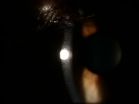Study finds eyeliner application may cause eye problems
2015-04-01
(Press-News.org) People who apply eyeliner on the inner eyelid run the risk of contaminating the eye and causing vision trouble, according to research by a scientist at the University of Waterloo. This is the first study to prove that particles from pencil eyeliner move into the eye.
Dr. Alison Ng, at the Centre for Contact Lens Research at Waterloo, directed the study when she was at Cardiff University in Wales. The team's findings appear in Eye and Contact Lens Science and Clinical Practice, the official peer-reviewed journal of the Contact Lens Association of Ophthalmologists.
Dr. Alison Ng and her colleagues used video recordings to observe and compare the amount of eyeliner particles that migrated into the tear film - the thin coating protecting the eye - after applying makeup in different styles.
"We noticed that the makeup migration happened quicker and was greater when eyeliner was put on the inner lid margin," said Dr. Ng, also a post-doctoral fellow in the School of Optometry and Vision Science in the Faculty of Science at Waterloo.
Each participant wore glitter eyeliner outside the lash line, and then on the inner lid area closer to the eye, or along the waterline.
The vision scientists found that within five minutes, between 15 and 30 per cent more particles moved into the eye's tear film when subjects applied eyeliner to the inside of the lash line, compared to outside it. The makeup also moved more quickly into the eye when eyeliner was applied inside the lash line.
As time passes, the amount of makeup entering the tear film steadily drops and by two hours, there was a negligible amount of eyeliner left. However, Dr. Ng and her colleagues say eyeliner can alter the tear film, adding to discomfort.
Eyeliner ingredients commonly include waxes, oils, silicones and natural gums to help eyeliner stick to eyelids and last for prolonged periods. It has to adhere through blinking, sweating and the secretion of natural oils.
Makeup that enters the tear film may cause discomfort for those with sensitive or dry eyes. But the eyeliner waxes and oils can also adhere to contact lenses and build up if used for more than one day. Resulting complications include irritation and redness, introduction of harmful bacteria from the eyeliner, and in some cases, eye infections or blurred vision.
"People who wear contact lenses are most likely to notice some problems," said Dr. Ng. "If they have eyeliner stuck to their lenses, increasing deposits might cause vision disruption as the lens becomes cloudier."
While this study didn't examine the bacterial aspect of makeup contamination to the eye, Dr. Ng notes that previous studies do show that old eye makeup can harbour bacteria.
"If you thoroughly sharpen your pencil eyeliner before each application and get rid of the stuff that's stuck to the end, you'll have a fresh tip which can help prevent infection," said Dr. Ng. "With twist-up eyeliner, cut some off the end before each use. And always make sure to fully remove eye makeup before bed."
INFORMATION:
Alison Ng writes about cosmetics and eye care on ContactLensUpdate.com, an online resource for eye care practitioners, run by the Centre for Contact Lens Research. She and colleagues at the CCLR also produced handouts for the public to share makeup tips for contact lens wearers.
[Attachments] See images for this press release:

ELSE PRESS RELEASES FROM THIS DATE:
2015-04-01
If you are trying to have a baby, a good night's sleep is more important than ever. A new research report appearing in The FASEB Journal shows that the womb has its own "body clock" that needs to synchronize with the mother's body clock to ensure optimal conditions for fetal growth and development. The inability of a mother's body clock to synchronize with the womb's clock may be at least part of the reason why some women have difficulty carrying a pregnancy to full term. Specifically, the failed synchronization switches off body clock genes in cells lining the womb, which ...
2015-04-01
ANCHORAGE, Alaska -- A team of scientists led by the U.S. Geological Survey found that polar bears, increasingly forced on shore due to sea ice loss, may be eating terrestrial foods including berries, birds and eggs, but any nutritional gains are limited to a few individuals and likely cannot compensate for lost opportunities to consume their traditional, lipid-rich prey -- ice seals.
"Although some polar bears may eat terrestrial foods, there is no evidence the behavior is widespread," said Dr. Karyn Rode, lead author of the study and scientist with the USGS. "In the ...
2015-04-01
Washington, DC--Night owls are more likely to develop diabetes, metabolic syndrome and sarcopenia than early risers, even when they get the same amount of sleep, according to a new study published in the Endocrine Society's Journal of Clinical Endocrinology & Metabolism.
The study examined the difference between night and morning chronotypes, or a person's natural sleep-wake cycle. Staying awake later at night is likely to cause sleep loss, poor sleep quality, and eating at inappropriate times, which might eventually lead to metabolic change.
"Regardless of lifestyle, ...
2015-04-01
Washington, DC--Exposure to the endocrine-disrupting chemical bisphenol A during pregnancy may raise a mother's susceptibility to weight gain and diabetes later in life, according to a new animal study published in the Endocrine Society's journal Endocrinology.
A chemical used to manufacture plastics and epoxy resins, bisphenol A (BPA) is found in a variety of consumer products, including plastic bottles, food cans and cash register receipts. The U.S. Centers for Disease Control and Prevention have estimated that more than 96 percent of Americans have BPA in their bodies.
BPA ...
2015-04-01
Cambridge, Mass. April 1, 2015-- A collaborative study between researchers from the Broad Institute of MIT and Harvard, Massachusetts Institute of Technology, and the National Center for Biotechnology Information of the National Institutes of Health (NIH-NCBI) has identified a highly efficient Cas9 nuclease that overcomes one of the primary challenges to in vivo genome editing. This finding, published today in Nature, is expected to help make the CRISPR toolbox accessible for in vivo experimental and therapeutic applications.
Originally discovered in bacteria, the CRISPR-Cas9 ...
2015-04-01
Many microbes cannot be cultivated in a laboratory setting, hindering attempts to understand Earth's microbial diversity. Since microbes are heavily involved in, and critically important to environmental processes from nutrient recycling, to carbon processing, to the fertility of topsoils, to the health and growth of plants and forests, accurately characterizing them, as a basis for understanding their activities, is a major goal of the Department of Energy (DOE). One approach has been to study collected DNA extracted from the complex microbial community, or the metagenome, ...
2015-04-01
NEW YORK (April 1, 2015) - Hospitals and health systems preparing for and treating patients with Ebola Virus Disease (EVD) in the fall of 2015 faced unexpected challenges for ensuring safety of staff, patients and the community. The experiences are detailed in two studies published online in Infection Control & Hospital Epidemiology, the journal of the Society for Healthcare Epidemiology of America (SHEA).
In a case study of the care of two patients with confirmed or suspected EVD at the National Institutes of Health (NIH) Clinical Center's Special Clinical Studies Unit, ...
2015-04-01
Mammals are good at figuring out which direction a sound is coming from, whether it's a rabbit with a predator breathing down its neck or a baby crying for its mother. But how we judge how far away that sound is was a mystery until now. Researchers from UConn Health report in the 1 April issue of the Journal of Neuroscience that echoes and fluctuations in volume (amplitude modulation) are the cues we use to figure the distance between us and the source of a noise.
"This opens up a new horizon," says Duck O. Kim, a neuroscientist at UConn Health. Researchers have long ...
2015-04-01
Don't throw away those bouncing batteries.
Researchers at Princeton University have found that common test of bouncing a household battery is not actually an effective way to check a battery's charge.
"The bounce does not tell you whether the battery is dead or not, it just tells you whether the battery is fresh," said Daniel Steingart, an assistant professor of mechanical and aerospace engineering and of the Andlinger Center for Energy and the Environment.
The battery bounce test, popularized in online videos, shows that fully charged batteries bounce very little ...
2015-04-01
Researchers offer a few tips for those who are worried that their nerves might stand between them and acing their next job interview. Stop worrying about how much you might blush or your nervous tics, and focus more on being warm, friendly and assertive. The advice comes from Amanda Feiler and Deborah Powell of the University of Guelph in Canada, who carefully watched what anxious people do during an interview, and how others respond to them. Their findings are published in Springer's Journal of Business and Psychology.
People who are anxious going into an interview often ...
LAST 30 PRESS RELEASES:
[Press-News.org] Study finds eyeliner application may cause eye problems

